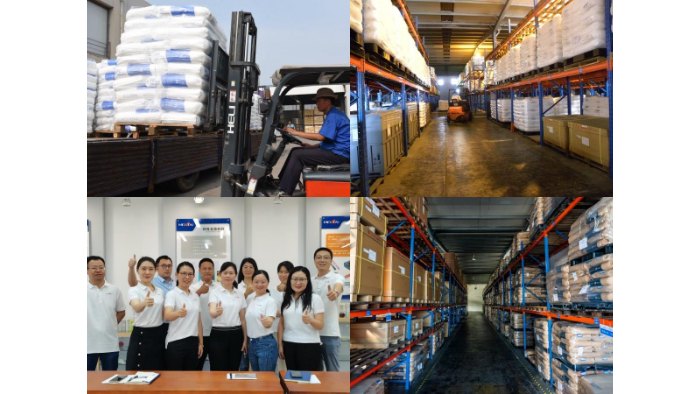Polypropylene (PP) is an important synthetic plastic with a wide range of applications. In the preparation process of polypropylene, copolymerization and homopolymerization are two different synthesis methods, and they have significant differences in chemical structure, physical properties and applications.
Recently, a customer produced shower heads and they needed us to recommend a PP raw material. There is a foreign customer who makes a shower head. They require that the material will not deform within 30 minutes at 80 degrees Celsius and the pressure is 3 kgf/cm2 (heat resistance temperature test); and it will not deform in 10 minutes when the pressure is 6 kgf/cm2. Deformation occurs (hydrostatic pressure test). A company previously recommended LyondellBasell's HP550J to him. They tested the sample and the results showed that the upper and lower joints of the shower head were warped. Based on the information provided by the customer, we communicated with the customer and recommended LyondellBasell impact-resistant copolymer PP - EP300H B to them. Because copolymer PP has good heat resistance and good dimensional stability. The HP550J tested before was homopolymerized and had poor long-term heat resistance stability. Therefore, when testing the heat resistance temperature, the upper and lower structures of the showerhead deformed, resulting in water leakage.
So what are the differences between homopolymer PP and copolymer?

1. Differences in chemical structure
Structural characteristics of copolymer PP:
Copolymerized PP is obtained by introducing different monomers, such as acrylic acid, butadiene, etc., into the polymerization reaction and copolymerizing them with propylene. This method of introducing different monomers results in the presence of randomly distributed isomers in the molecular chain of copolymerized PP, which brings diversity to its properties and applications.
Structural characteristics of homopolymer PP:
Homopolymer PP is obtained by a simple polymerization reaction of a single propylene monomer. The molecular chain of homopolymer PP is relatively single. Since no other monomers are introduced, its structure is relatively uniform and presents a more regular chain structure.
2. Differences in physical properties
Mechanical behavior
Due to its structural diversity, copolymer PP has good toughness and impact strength, and is suitable for applications that resist external impact and vibration.
Homopolymer PP shows higher rigidity and strength due to its relatively uniform structure, and is suitable for applications that require high stability and rigidity.
Thermal properties
Copolymer PP has relatively good stability at high temperatures, can be used at higher temperatures, and has certain heat resistance.
Homopolymer PP has poor performance at high temperatures and is easy to soften, so its application under high temperature conditions is relatively limited.
transparency and gloss
Copolymer PP usually has good transparency and gloss, making it widely used in injection molding, blow molding and other fields.
Homopolymer PP has relatively low transparency and gloss and is more used in applications requiring opacity.
3. Differences in application fields
Application fields of copolymer PP
Packaging materials: Due to its diversity and good transparency, copolymer PP is widely used in food packaging, pharmaceutical packaging and other fields.
Electronic products: The mechanical properties of copolymer PP make it an ideal material for electronic product casings and other fields.
Medical devices: It is widely used in medical devices that require high material purity and biocompatibility.
Application fields of homopolymer PP
Industrial parts: Due to the high strength and rigidity of homopolymer PP, it is often used to manufacture mechanical parts, automobile parts and other industrial products that require wear resistance and corrosion resistance.
Pipe system: Homopolymer PP has good corrosion resistance and chemical stability in pipeline systems, and is widely used in water treatment, chemical industry and other fields.
Furniture: The stiffness and stability of homopolymer PP make it an ideal choice in furniture manufacturing and can withstand certain loads.
4. Future development trends
Performance improvements and functionalization
By improving the formulas of copolymerized PP and homopolymerized PP, and introducing new functional monomers, we can improve their performance and functions and meet the needs of different application fields.
Sustainable development and environmental protection
As concerns about environmental protection and sustainable development increase, the production of polypropylene will move in a more environmentally friendly and degradable direction to reduce the impact on the environment.
Customized production
With the advancement of technology, it is expected to realize customized production of copolymer PP and homopolymer PP in the future, and adjust the properties of materials according to specific needs to meet the requirements of different industries.
Copolymer PP and homopolymer PP, as the two main types of polypropylene, have significant differences in chemical structure, physical properties and application fields. In actual applications, choosing the appropriate polypropylene type depends on the specific needs and application environment. With the continuous development of science and technology, the research and innovation of polypropylene will bring more possibilities to various fields and promote the development of the entire material science.
If you have any needs about copolymer PP, homopolymer PP, random copolymer PP, ternary copolymer PP, etc., please contact us. Our company represents Hanwha TotalEnergies PP, LyondellBasell PP, Korea Hyosung PP, etc.
Qingdao Prime union Trading was established in 2002. It is a professional plastic raw material agent. It distributes products of brands such as Chimei, Hanwha TotalEnergies, SABIC, Iyondellbasell, Borouge , Hyosung Korea, Ineos Styrolution and other brands.the products cover ABS,PC,PS,PMMA,AS,PP,PE,PA,PBT and other raw materials; the brother company Qingdao primetech Plastic, is a 16-year-old modification factory that can provide service for plastic modification, dyeing, and injection molding process support. If you have any needs for INOES ABS, please feel free to call us or leave a message/communicate online.

0086 13605427277
0086 0532 68051919
0086 157 2520 9359